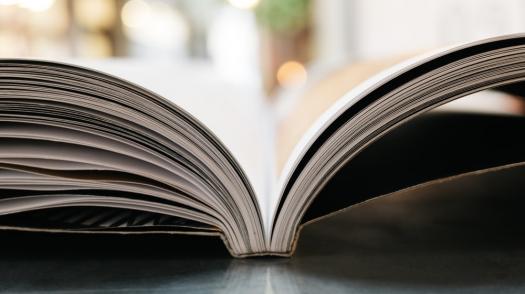This section looks at memory and offers practical tips.
Our memory works rather like a high-speed version of a huge library.1 New information comes into our heads much as a new book arrives at a library. The memory has the job of processing it and giving it the right label before sending it to the appropriate section and shelf. 2
A brain injury can make this system much less effective, and sometimes the information isn’t always sent to the right place. Problems with memory occur when we go looking for something amongst the shelves, but it isn’t in the section it’s supposed to be.
An injured brain has to work that much harder to find what it’s looking for as it scours the whole of the library.3
The different sections can be roughly broken down into 1:
- our immediate memory – information sent here is only held on to for a very short space of time (often just seconds). From here it is sent to ...
- our short-term memory – the information here is stored for a short period, before it is either rejected and ‘erased’ or sent to ...
- our long-term memory – this is a bit like the library archive and when information is sent here it is relatively safe (as long as we know where things are stored).
Short-term memory is often hit hardest by an acquired brain injury 4, which can have a big impact on children’s everyday lives.
Think how often we use our short-term memory to dial a number, or to know what stage we’re at in a sequence of tasks, such as preparing breakfast or composing an email. For children in school, it might be hard for them to hold on to instructions from a teacher.5
Our memory is a kind of ‘foundation skill’ - one that our other skills are built upon. So problems with memory might affect how a child learns new things in school or home.
It might also make situations with friends or family difficult.6 Children might struggle to remember things that have happened to them, or people’s names.
Other difficulties with memory might include:
- Trouble remembering things when a child gets distracted
- Difficulty holding on to new information 7
- Appearing not to learn from mistakes because they don’t remember making them
All of these things may lead to misunderstandings.Teachers and parents might wonder why a child can remember some things, but not others.
They may think a child is being deliberately difficult or not trying hard enough.8
Friends may think a child with an acquired brain injury isn’t interested in them because they’ve forgotten important personal information about them.9
But we know that memory is a very complicated ability, using different skills 10 and different parts of the brain. So children may remember some kinds of information but not others.8
There may not be a simple ‘cure’ for memory difficulties, but there are practical ways to assist the memory, and make a child’s everyday life more manageable.
Talking things through
The first, and simplest, is talking through experiences. Where have you been together? Who did you see? When was the last time we saw them?
This can help children with their memory. And it can also help parents understand what types of memory their child struggles with.11
Repetition and practice
One broad point to make about memory is that, often, the ‘procedural memory’ is left intact following a brain injury.
At its simplest, this is the part of our memory that stores information about how to do things at a level we aren’t always aware of.
Think how often you hear the phrase “It’s like riding a bike”. How to ride a bike is something our brain holds on to and becomes almost automatic after a certain amount of practice.12
After an acquired brain injury, some children are able to learn tasks by always doing them the same way and maintaining a routine.
Similarly, there are everyday things that may be able to be committed to memory through repetition. It might sound a bit old-fashioned, but learning by ‘parrot fashion’ may be helpful.
Making the home more ‘friendly’
Our thanks to Headway for its help in producing the practical tips in this section.
There are some simple changes parents can make to the home that can help.
Much of them rely on routine, which is extremely important when thinking about acquired brain injury.13, 14
For instance:
- Choose a place in the home or bedroom to keep important things. Think about the things your child needs to go to school, or when they leave the house.
- Keep a notepad by the phone so your child can make notes of any phone calls or messages
- Keep a noticeboard in a prominent place, with all the essential family information on it
- Keep a calendar in a prominent place
- Label the drawers or cupboards your child uses
- Mark or paint the bathroom door
- Label doors
The section on routine will give you and your child ideas of how a routine can be implemented.
Memory aids
Most people write lists, whether it’s for the shopping or the things we need to get done in work.
And lots of people use a diary to help their memory.
By writing things down, our memory has less to do. It’s important to remember that using memory aids does ‘not’ diminish our natural memory.
There are lots of things people can use to assist their memory:
- Watch alarm
- Mobile phone and tablet calendars and alarms
- Diaries, filofaxes and planners
- Notebooks, lists
- Wall charts
- Dictaphones
- Electronic organisers
- Pill reminder boxes for medication
- Sticky notes
- Photo albums
The importance of routine
Making lists and using memory aids is about trying to take some of the workload from the memory.
In the same way, establishing set routines over a day or a week means your child has less to remember and activities become ‘automatic’.
You can back up this routine by making a chart/planner of regular events. Using pictures or photographs can be helpful to support a child’s memory.
It’s inevitable that there might be some changes to the routine. But try to explain them carefully to your child.
Try to give them as much time as possible to adjust to the change in routine.
Being aware of wellbeing
Memory difficulties are only one part of the experience of acquired brain injury.
There are lots of other things going on, not least the emotional impact. If a child is suffering with low esteem or feelings of inadequacy, then struggling with their memory may make them feel worse.
Try to encourage children to talk about their difficulties, and involve them in the practical steps above. Remind them of the activities and tasks they’ve managed successfully.
Keeping track with some form of record of their successes can be useful. You might use a simple sticker chart to keep track of the things a child has done well.
Getting more out of the memory
There are some techniques that can help make the memory function better.
If we go back to our idea of the memory as a miniature library, where books are sorted, then there are ways of making that sorting operation more effective.
Simplify information wherever possible.
- Boil information down to its essentials.15
- Repeat and summarise information.16
- Divide information into chunks and try to give it one chunk at a time.16
- Encourage the child to take their time when they’re listening to information.
- Ask the child to repeat the information back in their own words. Or ask them to explain what you’ve said to them.
- Talk through tasks with them.17
- Try to use different methods of getting information across – draw a map to the shops as well as describing the route. You might get them to draw the map themselves with your help.
- Remember fatigue. Be conscious of the fact that children with an acquired brain injury are able to be more alert at some times than at others.
Mnemonics
Do you remember saying “Richard of York Gives Battle in Vain...” to remember the colours of the rainbow?
This is an example of a mnemonic, a cue for our memory. Some children may be able to come up with their own, while others might benefit from a parent’s help.
Some schools might use these to help all children remember things.


